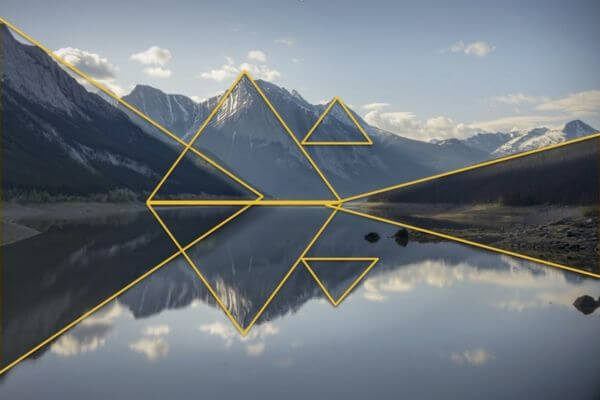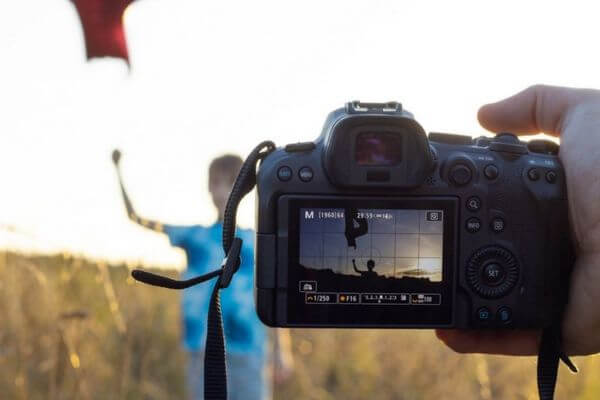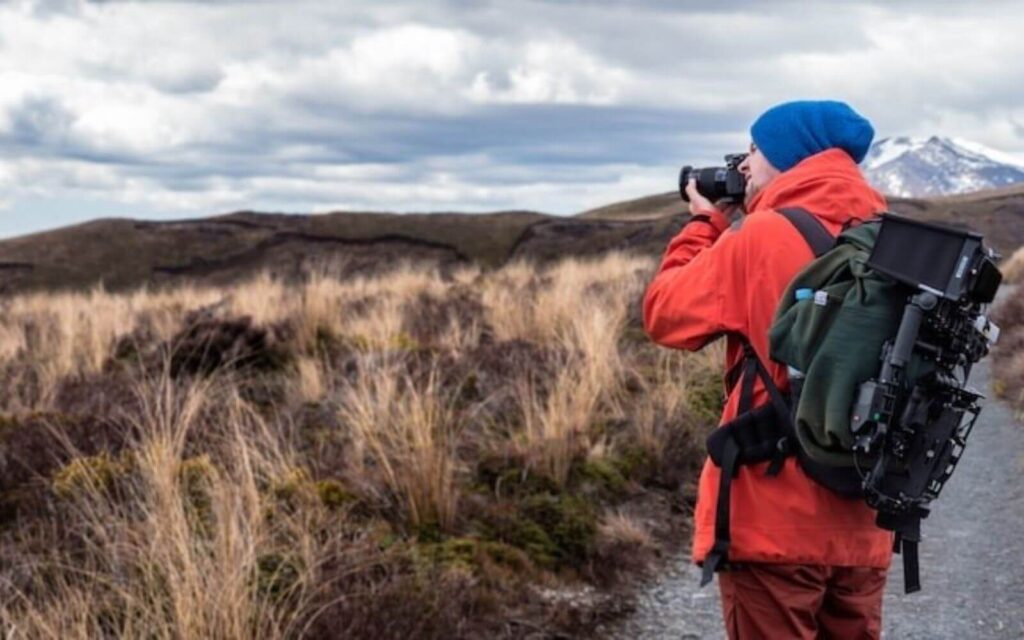Are you ready to embark on a journey through the captivating world of travel photography? Join us as we delve into the art of capturing stunning moments that will transport you back to your favorite destinations. In this article, we will guide you through a range of tips and techniques that will elevate your photography skills and help you create breathtaking images.
As avid travelers, we understand the importance of preserving memories and immortalizing the beauty we encounter along our journeys. Whether you’re exploring bustling city streets, serene natural landscapes, or vibrant local cultures, learning to capture these moments in a way that truly reflects their essence is key. With our expert advice and insider knowledge, you’ll gain valuable insights into mastering composition techniques, harnessing the power of lighting, capturing emotion and storytelling, utilizing timing and patience, as well as post-processing and editing techniques. So grab your camera, and let’s begin this exciting adventure together!
Mastering Composition Techniques
Get ready to be captivated by the power of composition as it transforms ordinary travel photographs into breathtaking works of art. When it comes to travel photography, mastering composition techniques is essential in capturing stunning moments that truly transport viewers to different places around the world.

One important aspect of composition is the rule of thirds. By dividing your frame into nine equal parts with two horizontal and two vertical lines, you can place your subject off-center for a more dynamic result. This technique creates balance and allows the viewer’s eyes to naturally move through the image, enhancing the overall visual appeal.
Another valuable composition technique is leading lines. These are elements within your photograph that guide the viewer’s gaze toward a certain point of interest or create depth in an image. Leading lines can be found in various forms, such as roads, fences, or even natural formations like rivers or tree branches. By incorporating leading lines into your photographs, you not only create a sense of depth but also add a visual narrative that draws viewers into the scene and invites them to explore further.
Lastly, remember framing when composing your travel photographs. Framing refers to using elements within a scene to frame your subject and draw attention to it. This could be anything from archways or door frames to natural elements like trees or rocks. The purpose of framing is twofold – it adds context and enhances the overall aesthetic appeal of your photograph while also providing a sense of depth and dimension.
Mastering composition techniques is crucial for capturing stunning moments during your travels. By understanding and implementing concepts such as the rule of thirds, leading lines, and framing, you can transform ordinary photographs into extraordinary works of art that transport viewers to new places and evoke emotions they may have never experienced. So grab your camera and embark on an adventure filled with captivating compositions waiting to be discovered!
Harnessing the Power of Lighting
Maximizing the potential of lighting is essential for creating captivating and dynamic photographs while exploring new places. The way light interacts with a subject can completely transform its appearance, adding depth, texture, and mood to the image.

As travel photographers, we have the unique opportunity to capture stunning moments in various lighting conditions, from soft golden hour light to dramatic shadows during midday. By understanding how different types of lighting can enhance our composition and evoke emotions, we can truly harness the power of lighting to create compelling images.
One important aspect to consider when working with lighting is the direction from which it is coming. Side lighting, for example, creates beautiful textures by casting shadows on one side of the subject. This can add dimension and drama to our photographs, making them more visually striking. On the other hand, front lighting tends to be more even and less dramatic but can still produce stunning results when used effectively. Backlighting, where the main source of light comes from behind the subject, creates silhouettes or halo effects that can add an ethereal quality to our images.
Additionally, understanding how different times of day affect lighting is crucial for capturing stunning travel photographs. The golden hour – that magical time just after sunrise or before sunset – bathes everything in a warm glow that lends a dreamy quality to our shots. Shadows are longer and softer during this time, creating a gentle contrast between light and dark areas. Alternatively, shooting during midday when the sun is high in the sky produces harsher shadows and bright highlights. Embracing these varying lighting conditions allows us to adapt our composition techniques accordingly and capture unique moments that tell a story about each place we visit.
Harnessing the power of lighting is vital for creating captivating travel photographs that resonate with viewers on a deeper level. By considering factors such as directionality and timing in relation to different types of natural light available at each location we explore as photographers, we can elevate our images from ordinary to extraordinary. The way light interacts with our subjects can add depth, texture, and mood, creating a sense of belonging for our audience as they immerse themselves in the scenes we capture. So next time you embark on a travel photography adventure, remember to embrace the power of lighting and watch your images come alive with stunning moments waiting to be captured.
Capturing Emotion and Storytelling
Understanding the emotional nuances and art of storytelling is paramount in creating evocative photographs that transport viewers to different worlds. As travel photographers, we have the power to capture not just beautiful landscapes but also the emotions and stories that unfold in front of us. By focusing on capturing emotion and telling a compelling story through our images, we can create photos that resonate with viewers on a deeper level.

To capture emotion and tell a story through our travel photography, it is important to pay attention to the small details. From the wrinkled lines on an elderly woman’s face to the twinkle in a child’s eye, these subtle expressions can convey a wealth of emotions. By observing and capturing these moments, we can bring life to our photographs and make them more relatable for viewers.
In addition to paying attention to details, composition plays a crucial role in storytelling. It is essential to frame your subject in a way that guides the viewer’s eye toward the intended narrative. Whether it’s using leading lines or placing your subject off-center, composing your shot thoughtfully can help create a visual story within your photograph.
Using light creatively is another powerful tool for capturing emotion and storytelling in travel photography. The play of light and shadows can evoke different moods and enhance the narrative you want to portray. Experimenting with backlighting or soft golden hour light can add depth and drama to your images, creating an atmosphere that draws viewers into your world.
- A candid moment captured between locals sharing laughter over cups of steaming tea.
- The vibrant chaos of a bustling market captured through colorful stalls and busy shoppers.
- The quiet solitude of an ancient temple at sunrise, where rays of light pierce through stained glass windows.
- A close-up image showcasing weathered hands holding onto memories encapsulated by delicate jewelry.
By understanding how emotions impact our perception of visual imagery and harnessing storytelling techniques, we have the ability, as travel photographers, to connect with viewers on a deeper level. Through our photographs, we can invite them to experience the emotions, stories, and sense of belonging often found in different corners of the world.
Utilizing Timing and Patience
Timing and patience are key in capturing the perfect moment, allowing us to freeze a split second in time that tells a story all on its own. As travel photographers, we understand the importance of being at the right place at the right time.

Whether waiting for the golden hour when the light is soft and warm or patiently observing a scene unfold before our eyes, timing plays a crucial role in creating stunning photographs. It’s about seizing that fleeting moment when everything aligns perfectly – the composition, lighting, and subject – to create an image that evokes emotion and transports viewers to that moment.
In travel photography, timing goes beyond just being present in the moment; it also involves anticipating what might happen next. By studying our surroundings and understanding cultural nuances, we can predict when something interesting will occur. It could be waiting for a street performer to strike a pose or capturing the excitement of locals during a festival. This level of awareness allows us to capture authentic moments that tell stories and provide glimpses into different cultures and ways of life.
But timing alone is not enough; patience plays an equally important role. Sometimes we have to wait for hours or even days for that perfect shot. We need to be willing to invest time into our craft, knowing that great photographs don’t come easily or quickly. Patience allows us to observe and connect with our subjects on a deeper level, resulting in more meaningful images. It also gives us the opportunity to experiment with different angles, compositions, and settings until we achieve the desired result.
So remember, as travel photographers seeking stunning moments captured through our lenses, mastering timing and embracing patience are essential skills. These qualities allow us to freeze those split seconds where stories unfold before our eyes. By being present in both body and mind while immersing ourselves in new environments, we can capture images that not only evoke emotion but also foster connection among viewers who share a common longing for belonging.
Post-Processing and Editing Techniques
Once the photograph is taken, the real magic happens in post-processing and editing techniques, where we can transform an ordinary image into a visually captivating masterpiece. With the help of various software and tools, we have the ability to enhance colors, adjust exposure levels, and bring out the finest details of our travel photographs. Post-processing allows us to add depth and vibrancy to our images, making them truly come alive.

In the realm of post-processing and editing techniques, there are endless possibilities for creating stunning visuals that evoke a sense of wanderlust and adventure. Here are some techniques that can take your travel photographs to the next level:
- Color grading: By manipulating colors through saturation adjustments or adding filters, we can create a specific mood or atmosphere in our images. Warm tones may evoke feelings of nostalgia or coziness, while cooler tones can give a sense of tranquility or mystery.
- Selective sharpening: This technique allows us to selectively sharpen certain areas of an image while keeping other parts soft and dreamy. It helps draw attention to important details like intricate architecture or mesmerizing landscapes.
- Creative cropping: Sometimes, capturing the perfect composition in-camera isn’t always possible. However, with creative cropping during post-processing, we have the power to reshape our images and highlight key elements that tell a story.
- Adding textures: Textures can add depth and character to an image. Whether overlaying a subtle film grain or incorporating natural textures like wood grains or stone patterns, these additions can create a tactile quality that enhances the overall visual experience.
Through post-processing and editing techniques like color grading, selective sharpening, creative cropping, and adding textures, we have the ability to elevate our travel photographs from mere snapshots to works of art that transport viewers into another world. By exploring these techniques and finding our unique style in processing our images, we not only capture stunning moments but also connect with others who share our love for travel and the art of photography.
Frequently Asked Questions
What type of camera equipment is recommended for travel photography?
For travel photography, we recommend a versatile camera with interchangeable lenses, such as a mirrorless or DSLR camera. It’s important to have a wide-angle lens for landscapes, a telephoto lens for capturing distant subjects, and a prime lens for low-light situations.
How can I capture unique perspectives and angles in my travel photos?
To capture unique perspectives and angles in our travel photos, we can experiment with different heights and distances, use leading lines to create depth, incorporate foreground elements for added interest, and try shooting from unusual vantage points.
What are some tips for photographing people and cultures respectfully while traveling?
When photographing people and cultures while traveling, it’s crucial to be respectful. Engage with locals, learn about their customs, and ask for permission before taking pictures. Capture the essence of their lives in a way that honors their uniqueness.
How can I achieve sharp and focused images in challenging lighting conditions?
To achieve sharp and focused images in challenging lighting conditions, we can use a few techniques. Firstly, adjust the camera’s ISO to a higher setting. Secondly, utilize a tripod for stability. Lastly, consider using artificial lighting or reflectors to enhance the overall lighting situation.
What are some tips for creating a visually cohesive series of travel photographs?
To create a visually cohesive series of travel photographs, we need to consider the theme, composition, and editing. By choosing a consistent subject or color palette, framing our shots carefully, and applying similar edits, we can tell a captivating visual story.
Shoot Like a Pro, Tell Your Travel Story
Travel photography is a powerful tool for capturing stunning moments and preserving memories from our journeys around the world. By mastering composition techniques, we can create visually captivating images that draw viewers in and tell a story. The art of harnessing the power of lighting allows us to create mood and atmosphere in our photographs, enhancing their impact and evoking emotions.
Additionally, capturing emotion and storytelling is crucial in travel photography. By focusing on people and their interactions with their surroundings, we can convey the essence of a place and capture authentic moments. Utilizing timing and patience is also key – waiting for the perfect moment to click the shutter can make all the difference between an ordinary photo and an extraordinary one.
Lastly, post-processing and editing techniques play a vital role in enhancing our travel photographs. With careful adjustments to color, contrast, and clarity, we can bring out the true beauty of a scene while still maintaining its authenticity. These techniques allow us to transform our images into works of art that truly reflect our experiences.
In conclusion, travel photography is not just about taking pictures; it’s about telling stories through visuals. It requires skillful composition, an understanding of lighting techniques, the ability to capture genuine emotions, patience for that perfect shot, and post-processing skills to enhance the final result. With these tips in mind, we can all become better travel photographers capable of capturing those stunning moments that will transport us back to our adventures for years to come. So grab your camera and start exploring – there’s a world full of incredible moments waiting to be captured!






